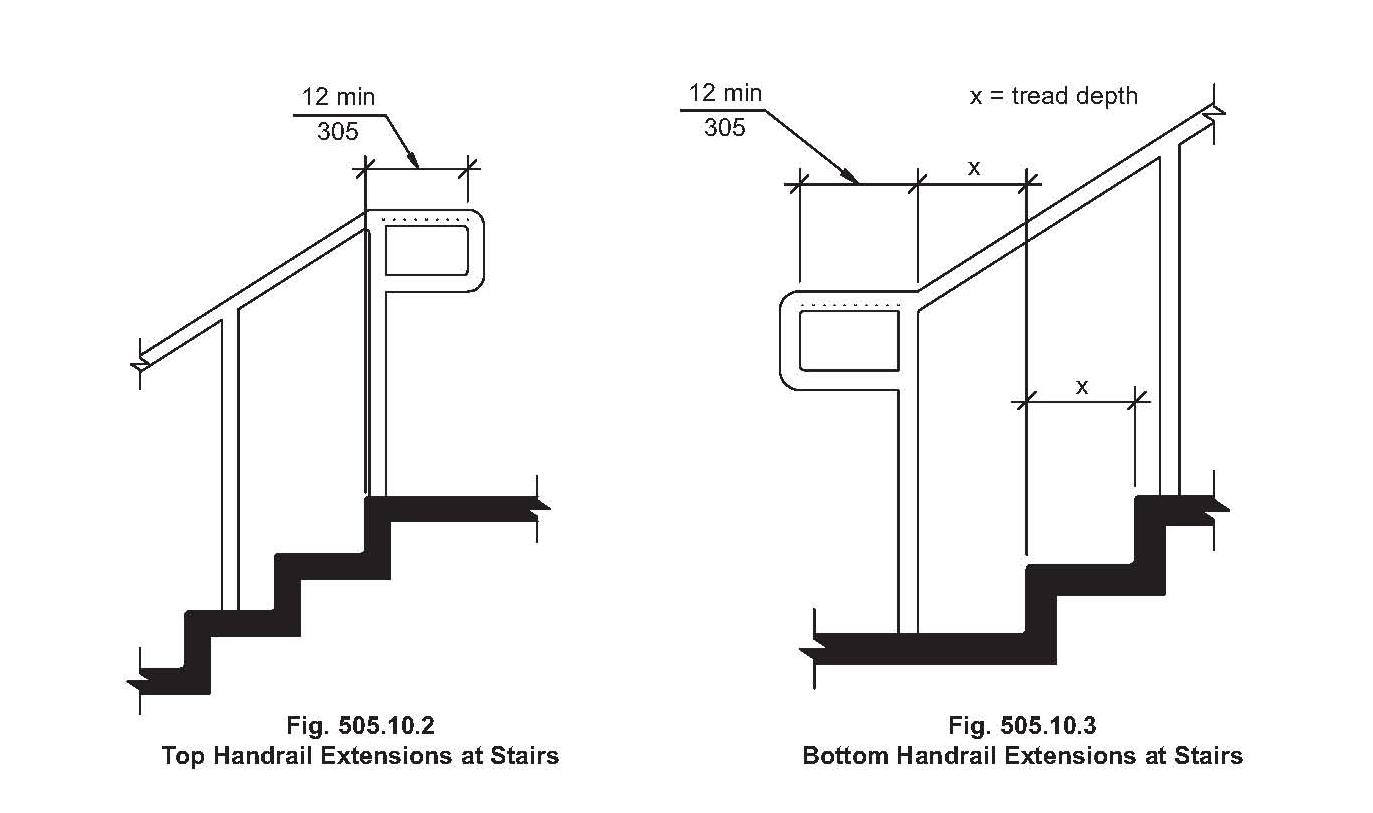Stair Railing Height: Ensuring Safety and Style on Every Step

Ever wondered why stair railings are a certain height? It's not just an aesthetic choice; it's about safety, governed by specific regulations known as stair rail height codes. These codes ensure a secure environment, minimizing the risk of falls and accidents on staircases. Let's explore the fascinating world of these essential safety measures.
Stair rail height regulations are crucial aspects of building codes designed to protect people using stairs. These codes dictate the minimum and sometimes maximum height requirements for railings to provide adequate support and prevent falls. Understanding these regulations is essential for homeowners, builders, and architects to ensure safe and compliant staircases.
Historically, stair railing regulations evolved as a response to increasing urbanization and the need for standardized safety measures in buildings. Early building codes recognized the dangers posed by unprotected staircases and began to incorporate specific height requirements for railings. These regulations have been refined over time based on research, accident data, and evolving building practices.
The importance of adhering to stair rail height code requirements cannot be overstated. These regulations are directly linked to reducing the risk of falls, which can result in serious injuries. Properly designed and installed railings provide essential support and stability, especially for children, the elderly, and individuals with mobility issues. Compliance with these codes demonstrates a commitment to safety and helps avoid potential legal liabilities.
One of the main issues related to stair rail height codes is the variation in regulations across different jurisdictions. While the International Building Code (IBC) provides a widely adopted standard, local building codes may have specific modifications or amendments. This can lead to confusion and requires careful consideration of the applicable regulations in a particular area.
Stair railing height code typically specifies a minimum height measured vertically from the nosing of the stair tread to the top of the rail. The IBC, for instance, generally requires a minimum height of 34 inches and a maximum height of 38 inches. Understanding these measurements is critical for proper installation and inspection.
Benefits of adhering to stair railing height codes include enhanced safety, compliance with building regulations, and increased property value. A safe staircase contributes significantly to a secure home environment, reducing the risk of accidents. Compliance with building codes avoids potential legal issues and ensures a smooth inspection process. Furthermore, a well-maintained and code-compliant staircase can be a positive selling point for a property.
To ensure your staircase meets stair rail height code requirements, start by consulting your local building authority to determine the specific regulations in your area. Hire a qualified contractor experienced in staircase construction and railing installation. Before finalizing the project, schedule an inspection to verify compliance with all applicable codes.
Advantages and Disadvantages of Standardized Stair Rail Height Code
While standardized codes offer significant benefits, some potential downsides warrant consideration.
| Advantages | Disadvantages |
|---|---|
| Increased safety and reduced accidents | Potential limitations in design flexibility |
| Clear guidelines for builders and homeowners | Variations in local codes can cause confusion |
| Enhanced property value | May not address specific needs in unique situations |
Best Practices:
1. Always consult local building codes before starting any staircase project.
2. Hire qualified professionals for design and installation.
3. Use high-quality materials that meet or exceed code requirements.
4. Conduct thorough inspections throughout the construction process.
5. Maintain railings regularly to ensure ongoing safety.
FAQ:
1. What is the standard stair rail height? The standard height is typically around 34-38 inches.
2. Do I need a railing on both sides of the stairs? Most codes require railings on both sides for stairs wider than a certain measurement.
3. What materials are acceptable for stair railings? Common materials include wood, metal, and composite materials.
In conclusion, stair rail height codes are crucial for ensuring the safety and well-being of everyone using staircases. By adhering to these regulations, we create safer homes, reduce the risk of accidents, and enhance the overall value of our properties. Understanding and implementing these codes is a responsibility shared by homeowners, builders, and architects. Let's prioritize safety and create secure environments for ourselves and our loved ones. By following the outlined best practices and consulting with professionals, we can achieve stylish and safe staircases that meet all necessary requirements. Remember, a little attention to detail can make a big difference in preventing accidents and ensuring a safe and secure home.
Unleashing your inner artist exploring the world of sullivan boo drawings
Decoding the secrets your guide to boat hull number searches
Unlocking the secrets your guide to a used toyota rav4 hybrid and carfax




:max_bytes(150000):strip_icc()/stair-handrail-and-guard-code-1822015-FINAL1-5c054b4dc9e77c0001600219.png)





:max_bytes(150000):strip_icc()/stair-handrail-and-guard-code-1822015-final-CJ-01-157768d7ac40439da36f9ba69faa00c6.png)

